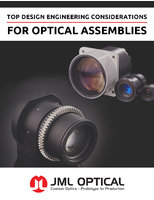EGR Valve Unit incorporates air intake throttle valve.
Share:
Press Release Summary:
Requiring one motor and one sensor, exhaust gas recirculation (EGR) valve unit integrates air intake throttle valve and EGR valve. Air intake throttle valve controls air entering engine, while EGR valve controls exhaust gas to be recirculated into engine. Combining ducts and reducing number of connectors, design promotes automotive design flexibility. Coupling between valves allows application to various engine parameters by changing shape of connection between 2 valves (cam profile).
Original Press Release:
DENSO Develops EGR Valve Unit
World’s first to integrate air intake throttle valve and EGR valve and half the size of conventional models
KARIYA (Japan)Â – Global automotive supplier DENSO has developed an exhaust gas recirculation (EGR) valve unit, a major component of EGR systems that helps make diesel engine emissions cleaner. The new unit, the first in the world to integrate an air intake throttle valve and an EGR valve, is half the size of conventional models and requires fewer components, thus reducing costs. The unit will be installed in a diesel passenger vehicle to be sold in Europe from later this year.
Reducing size
Conventionally, air intake throttle valves and EGR valves were separately installed to vehicles. The air intake throttle valve controls the amount of air entering the engine and the EGR valve controls the amount of exhaust gas to be recirculated into the engine. By integrating the two valves into one unit, DENSO combined the ducts and reduced the connectors, resulting to reducing the size to half compared to previous models. As the EGR system needs to be installed in a limited space close to the engine, a smaller system enables automakers to design engines more flexibility.
Reducing cost
Conventionally, a motor for valve opening and closing, paired with a sensor to detect the valve opening and closing angle, were needed for both the air intake throttle valve and EGR valve. However, DENSO’s new unit, which integrates the two valves, needs only one motor and one sensor, thus reducing the cost.
Flexible to meet various engine parameters
The air intake throttle valve and EGR valve are connected through a highly flexible coupling (cam-link mechanism), allowing the new unit to be applied to various engine parameters, including displacement and output, merely by changing the shape of the connection between the two valves (cam profile).
About diesel engine EGR systems
The diesel engine EGR system, which consists of an EGR valve, an air intake throttle valve, and an EGR cooler, recirculates a portion of the exhaust gas into the engine to lower the combustion temperature and hence reduce emissions of oxides of nitrogen (NOx). With the introduction of stricter exhaust emission regulations worldwide, including Euro 6 standards in Europe, this system has attracted much attention. The main type of EGR system used today is the high pressure loop (HPL) EGR system where the exhaust gas to be recirculated is taken from an upstream section of the exhaust passage. However, this system has a disadvantage: diverting a fraction of the exhaust gas before the turbocharger that uses exhaust gas energy to force extra air into the engine reduces the amount of exhaust gas energy which can be used by the turbocharger, which makes it difficult for the forced induction device to produce high power. Therefore, the combination of a high pressure loop EGR with low pressure loop (LPL) EGR that takes the exhaust gas to be recirculated from a downstream section of the exhaust passage, is expected to be widely used in the future.
DENSO developments
DENSO has been mass-producing its first EGR valves used in LPL EGR systems since February 2011. It has also been mass-producing LPL EGR systems with a separate air intake throttle valve and EGR valve since November 2012. DENSO’s new EGR valve unit is designed for LPL EGR systems. DENSO will continue to develop products and technologies to improve the environmental performance of diesel vehicles.
DENSO Corporation, headquartered in Kariya, Aichi prefecture, Japan, is a leading global automotive supplier of advanced technology, systems and components in the areas of thermal, powertrain control, electronics and information and safety. Its customers include all the world's major carmakers. Worldwide, the company has more than 200 subsidiaries and affiliates in 38 countries and regions (including Japan) and employs more than 130,000 people. Consolidated global sales for the fiscal year ending March 31, 2013, totaled US$38.1 billion. Last fiscal year, DENSO spent 9.4 percent of its global consolidated sales on research and development. DENSO common stock is traded on the Tokyo and Nagoya stock exchanges.




